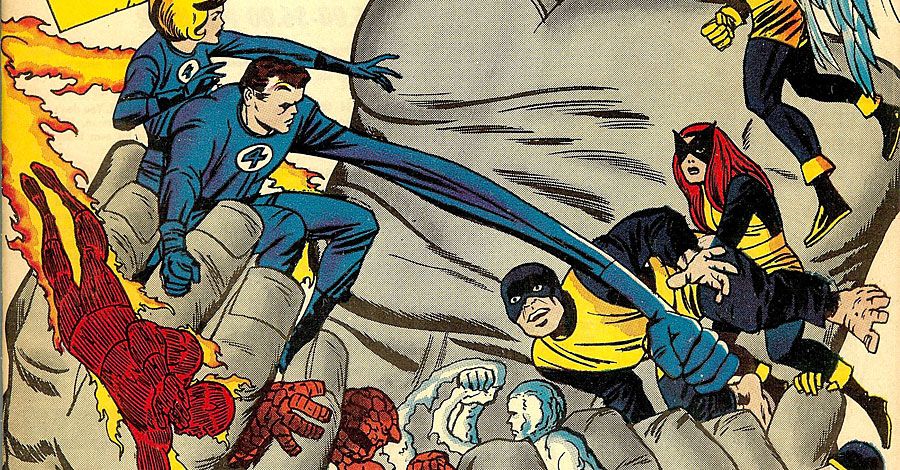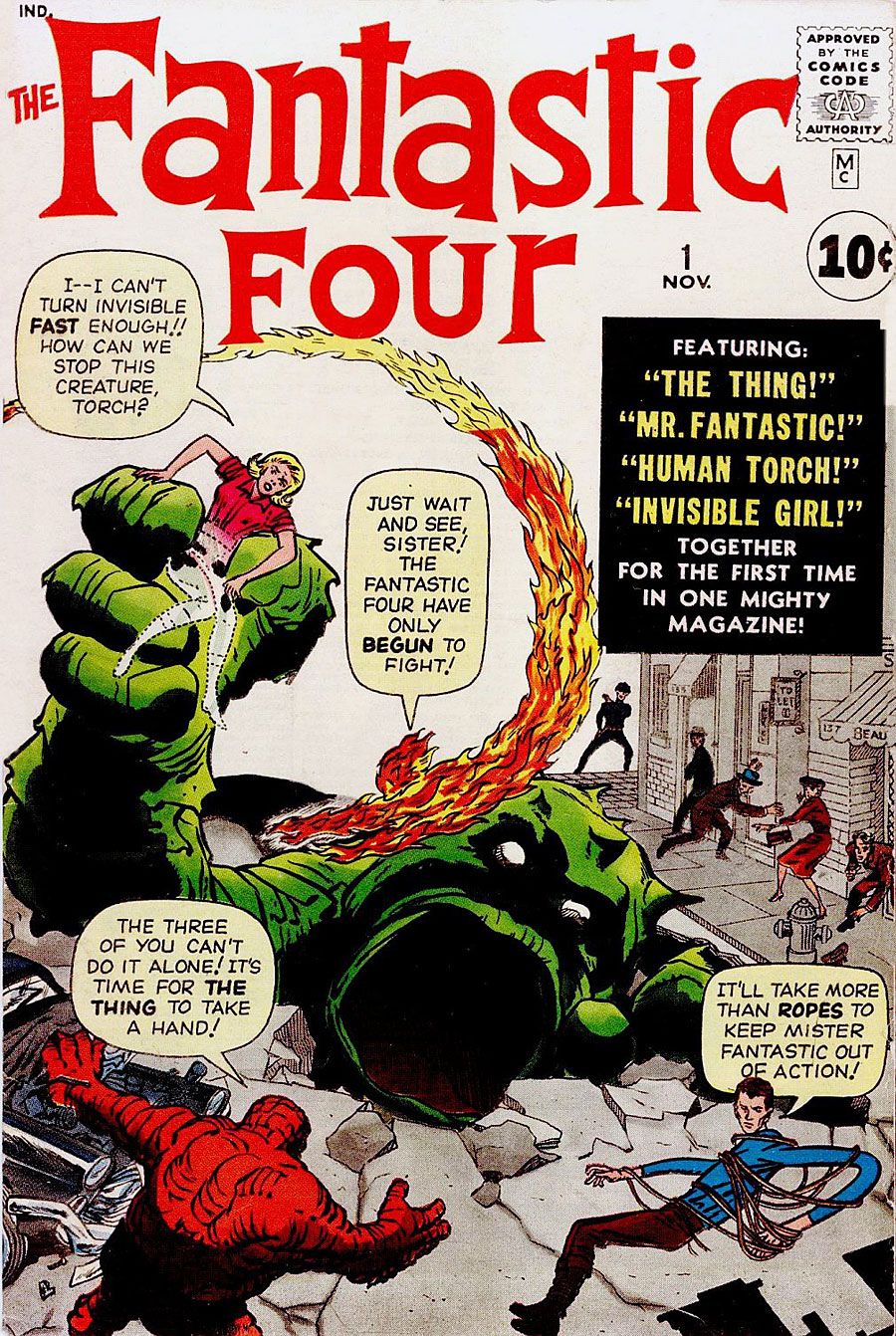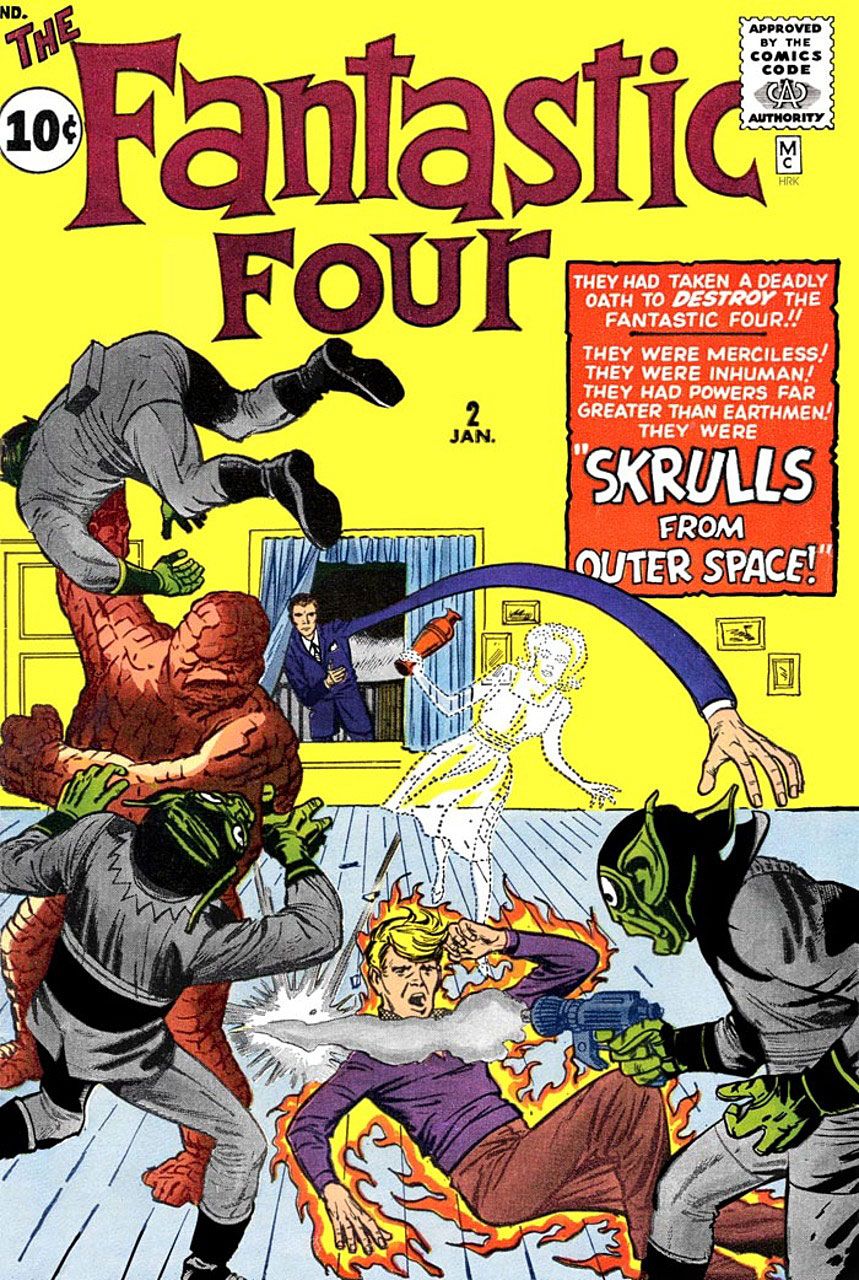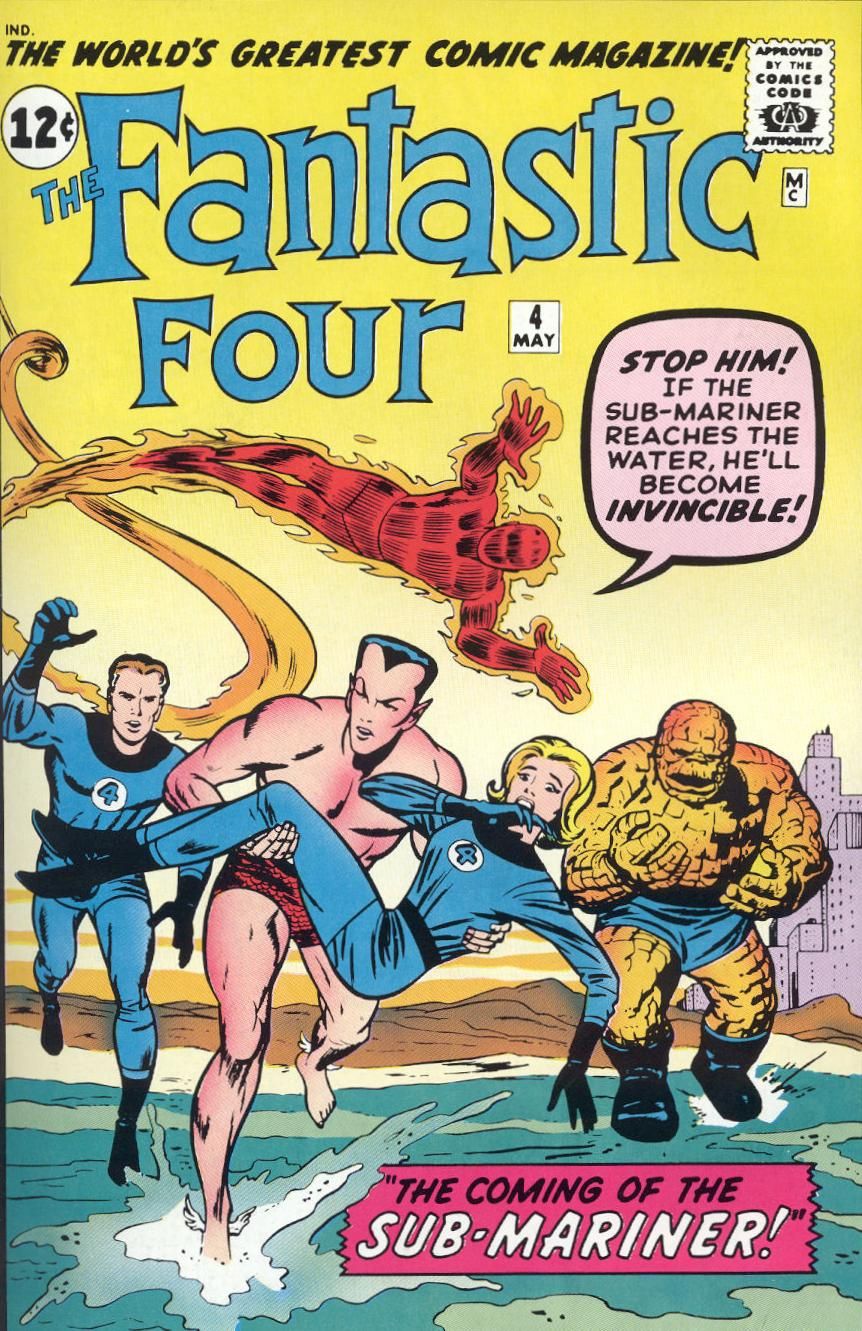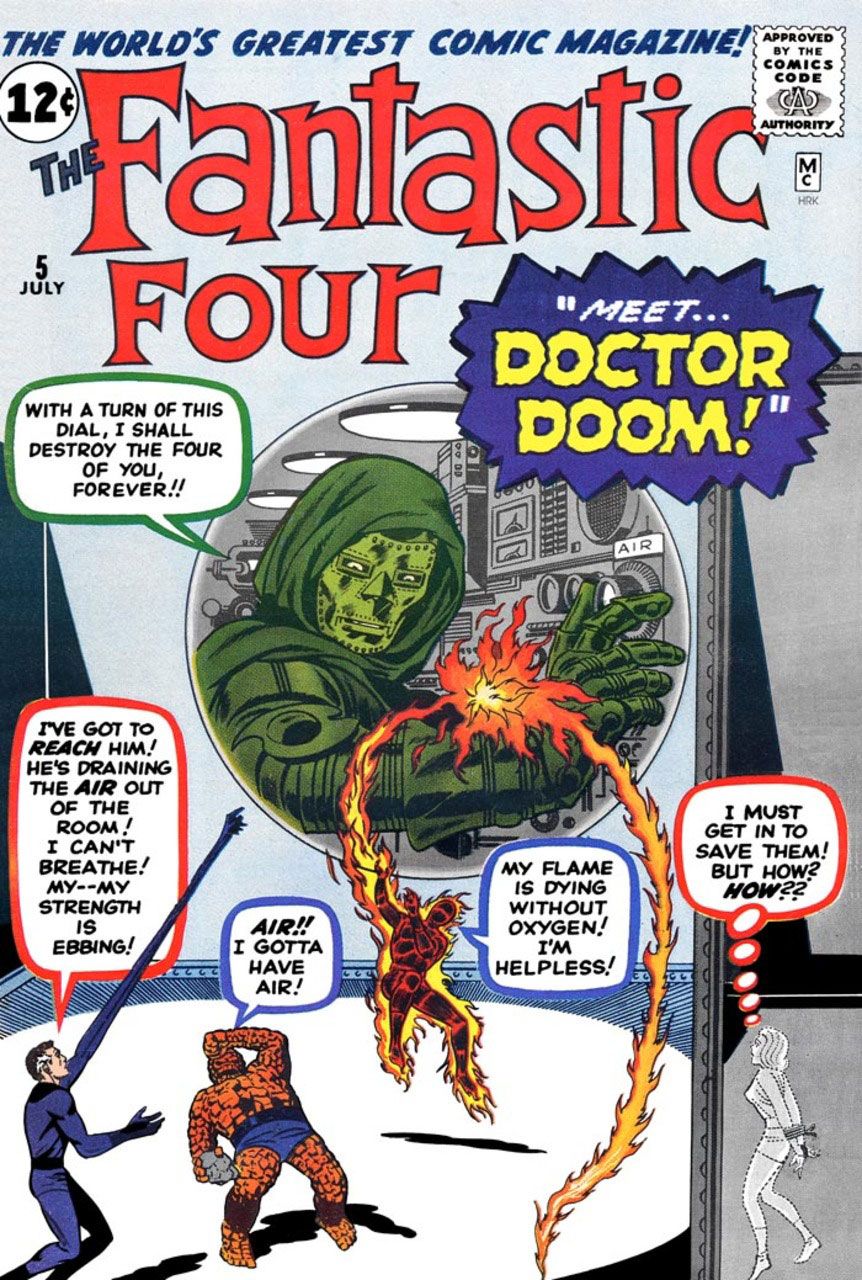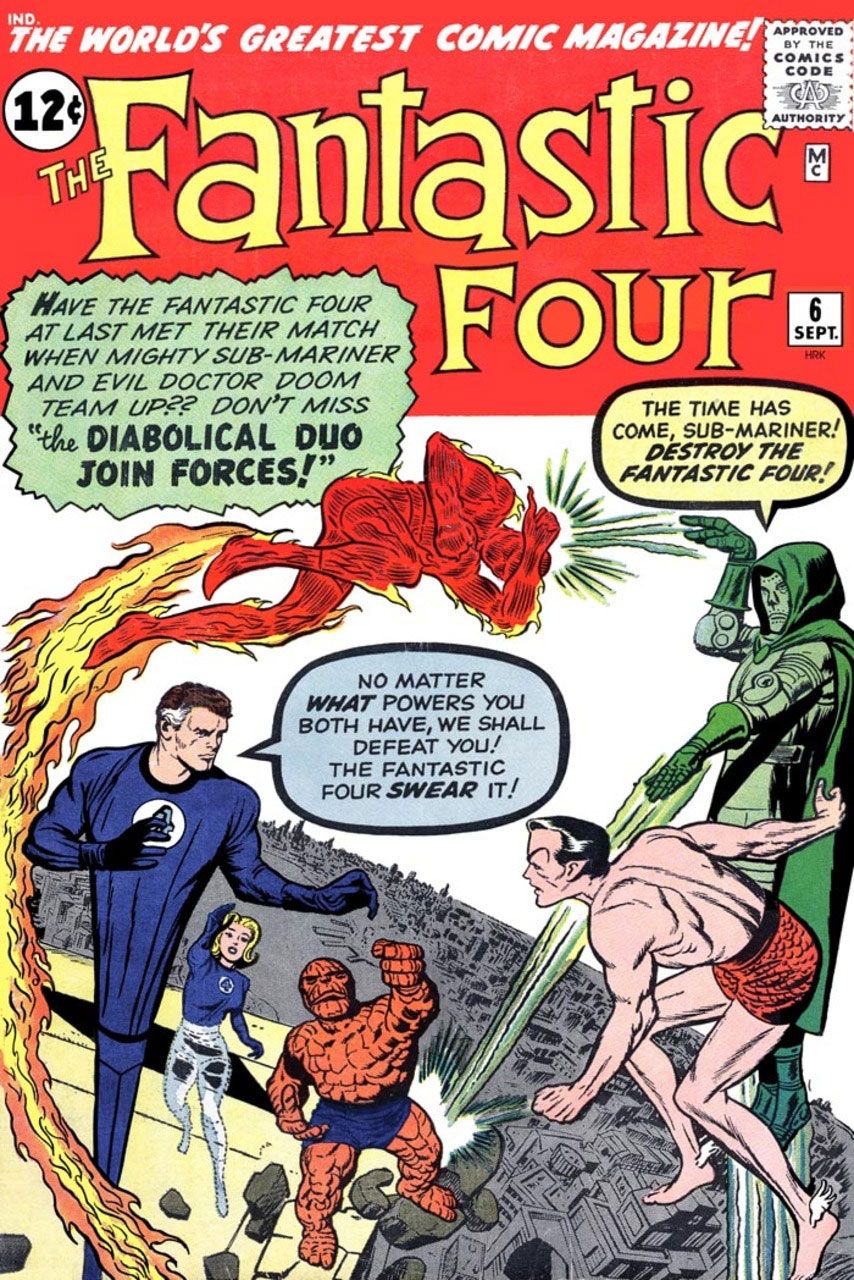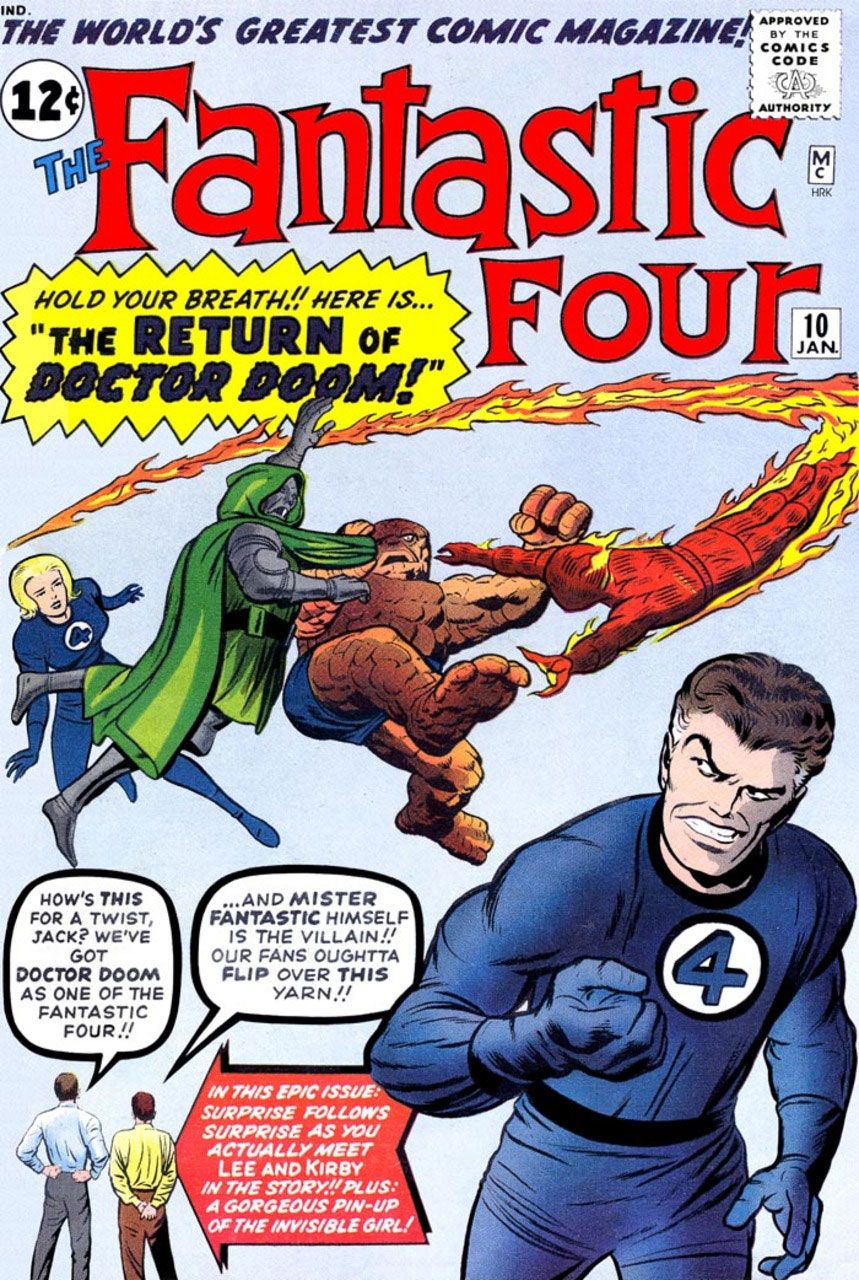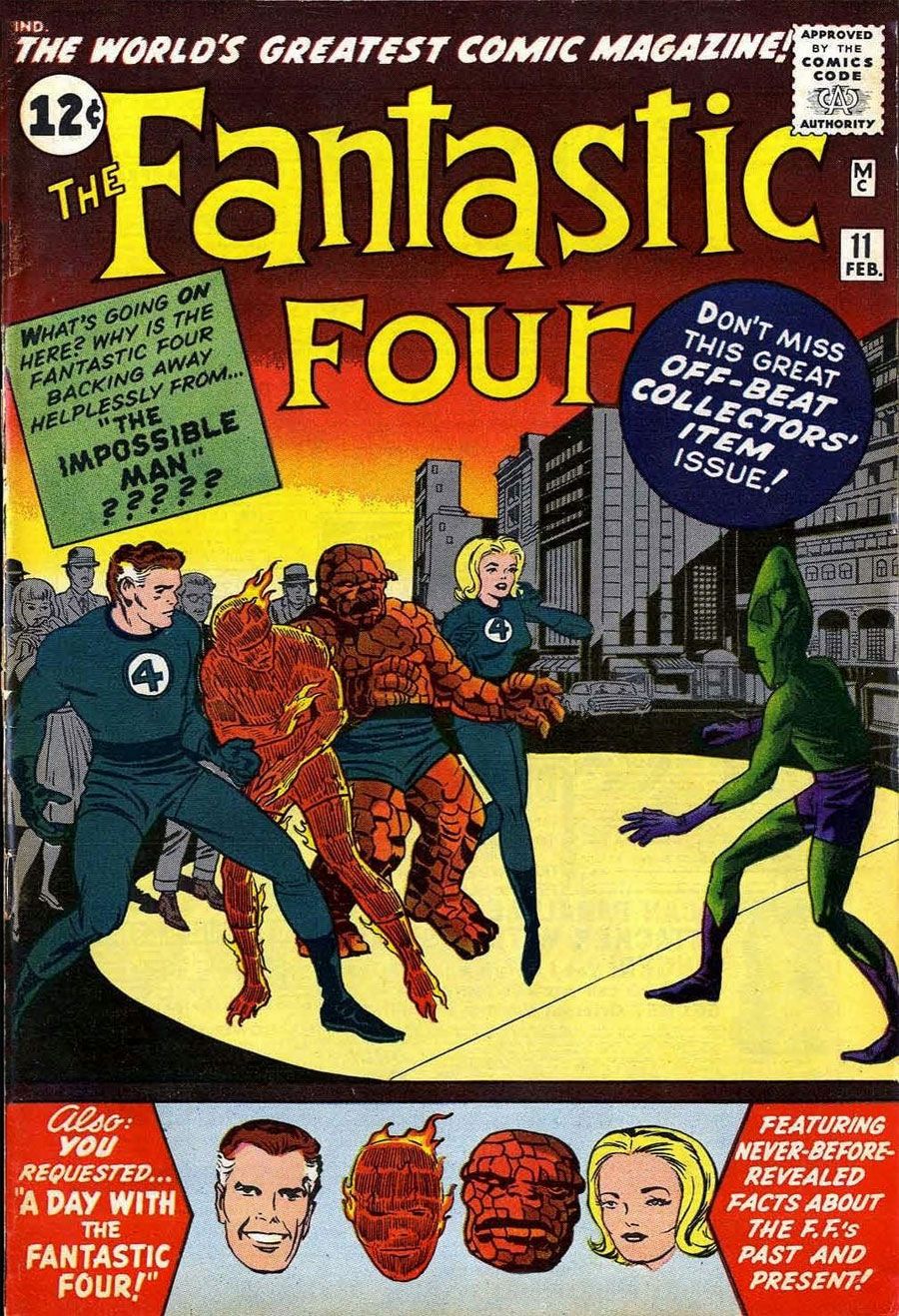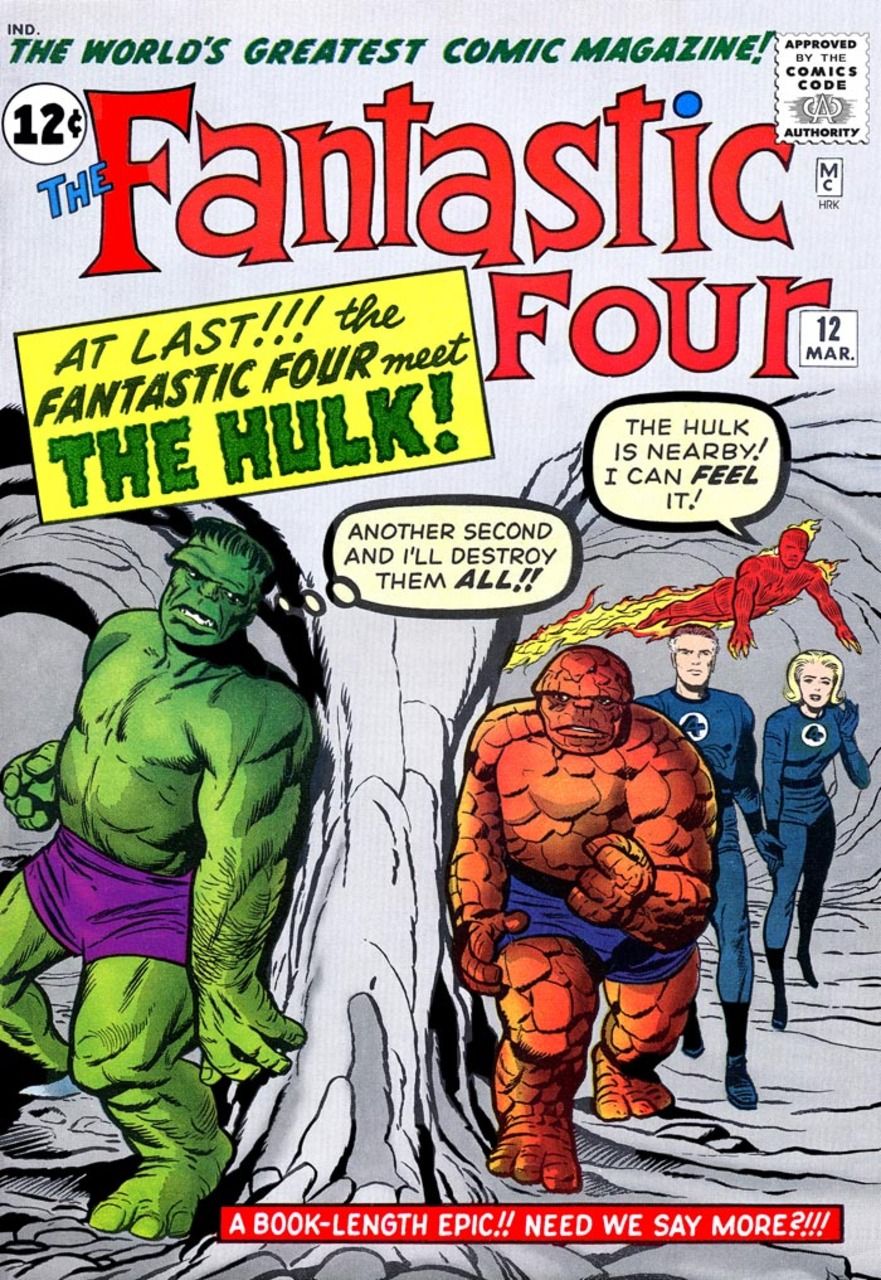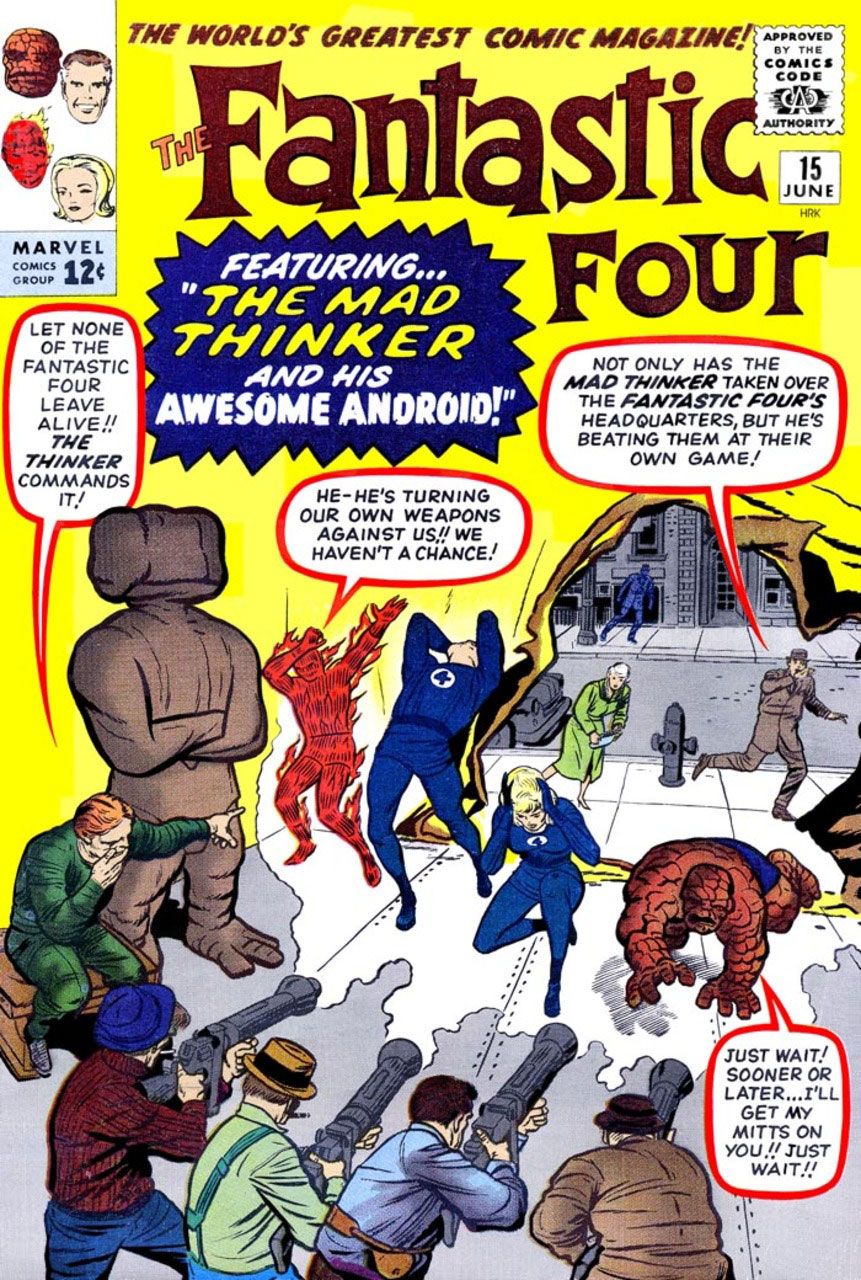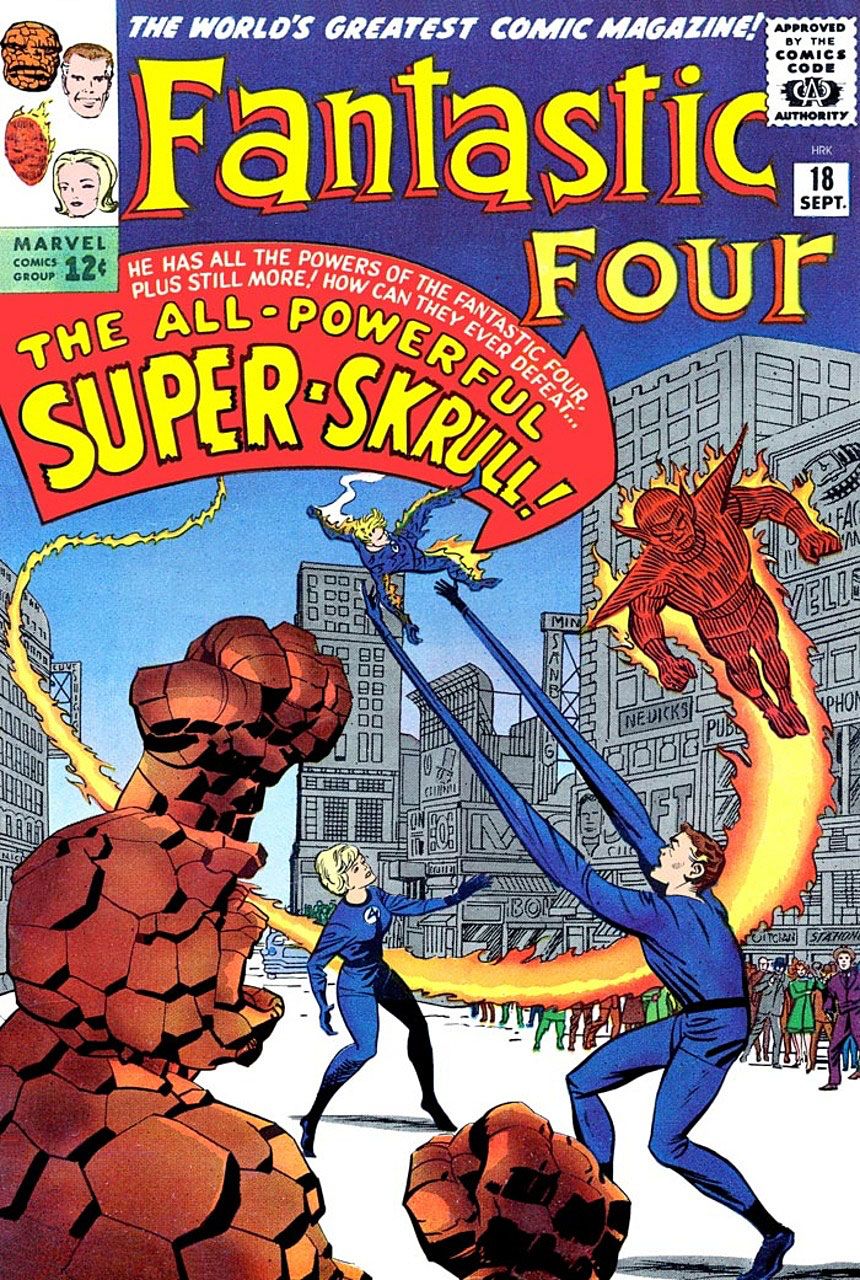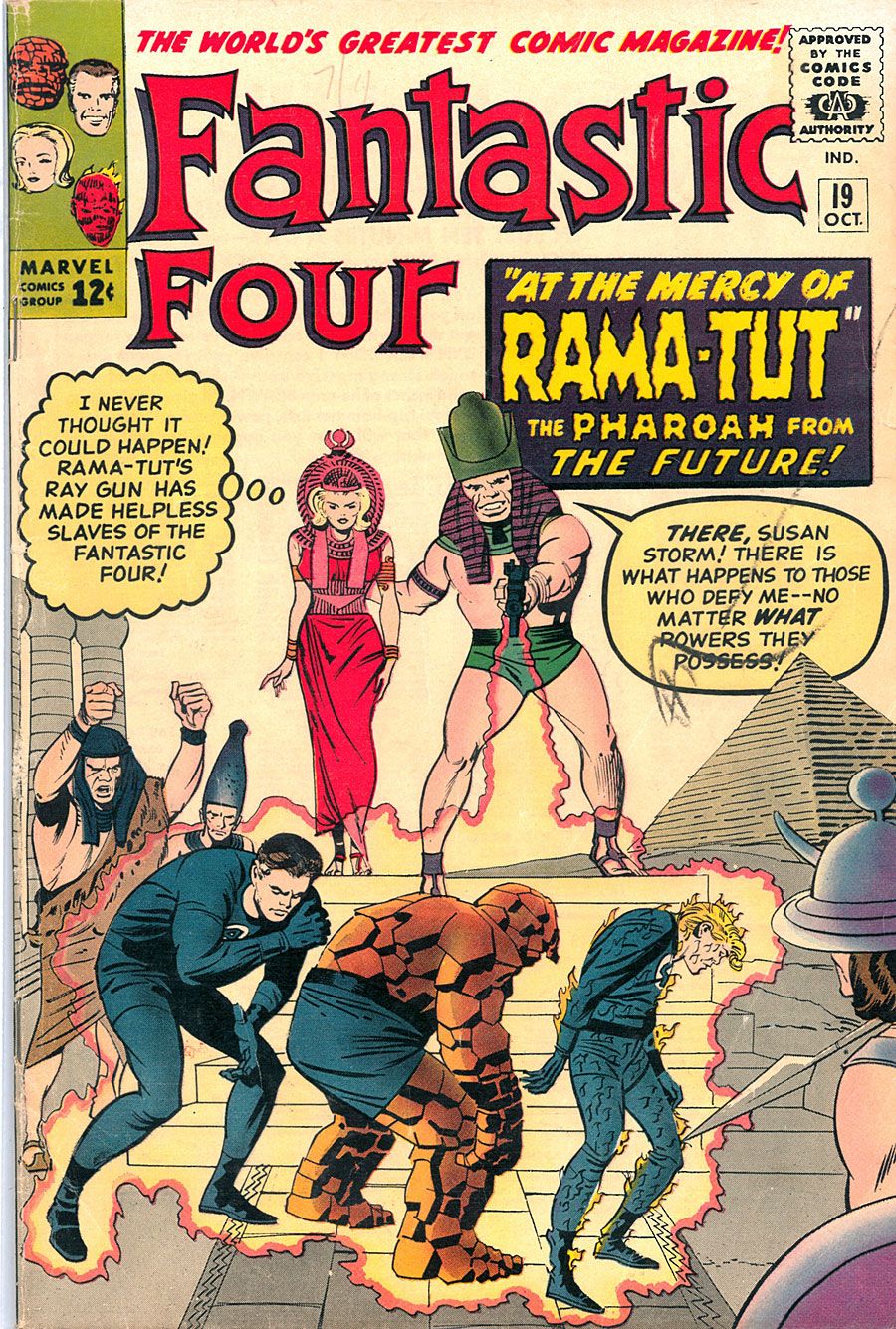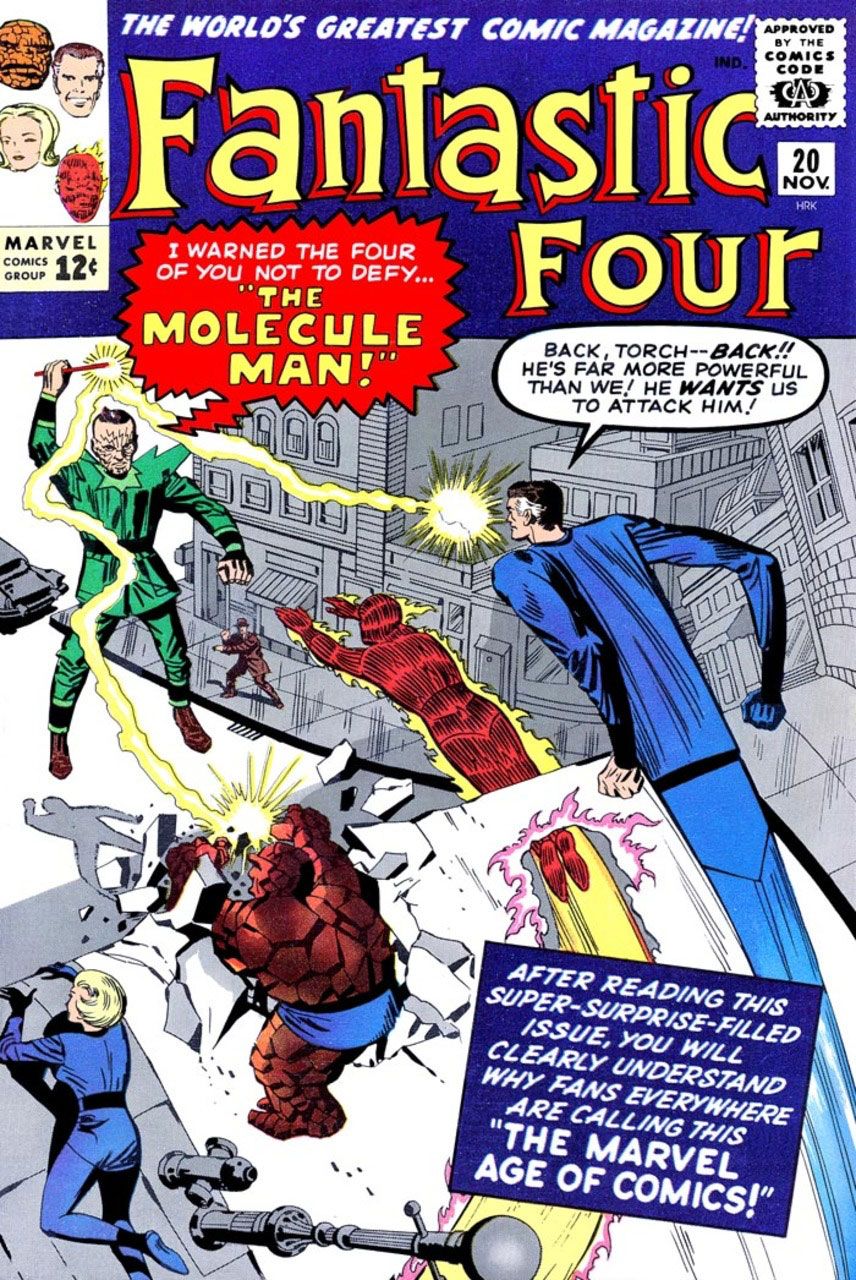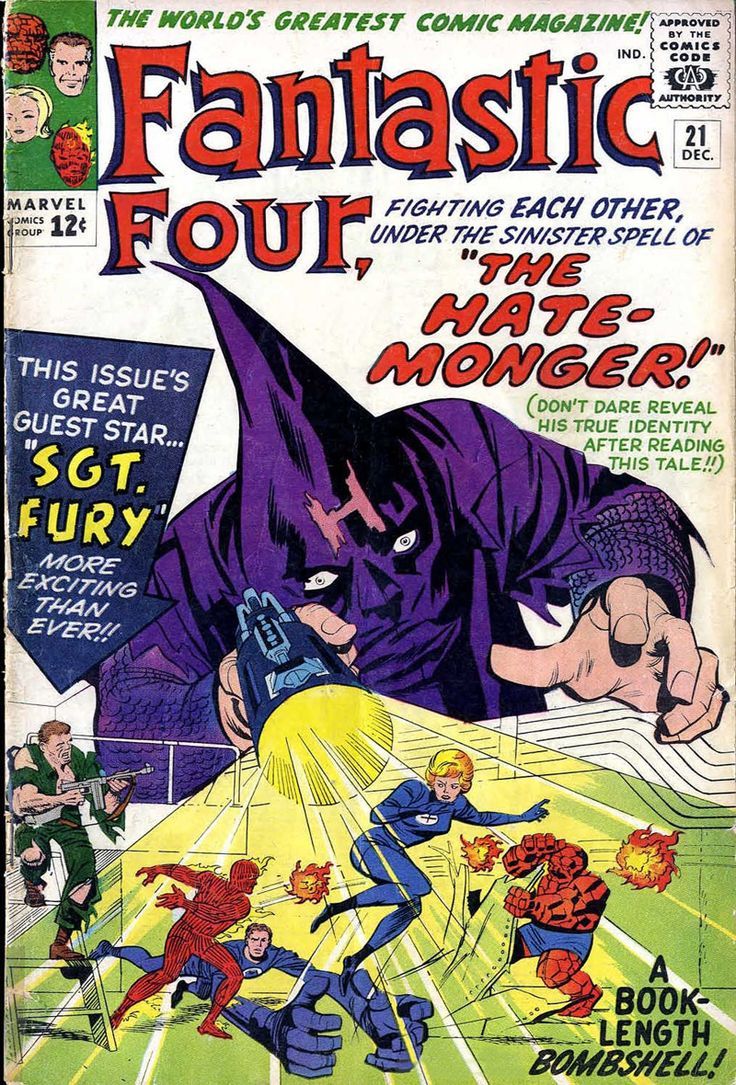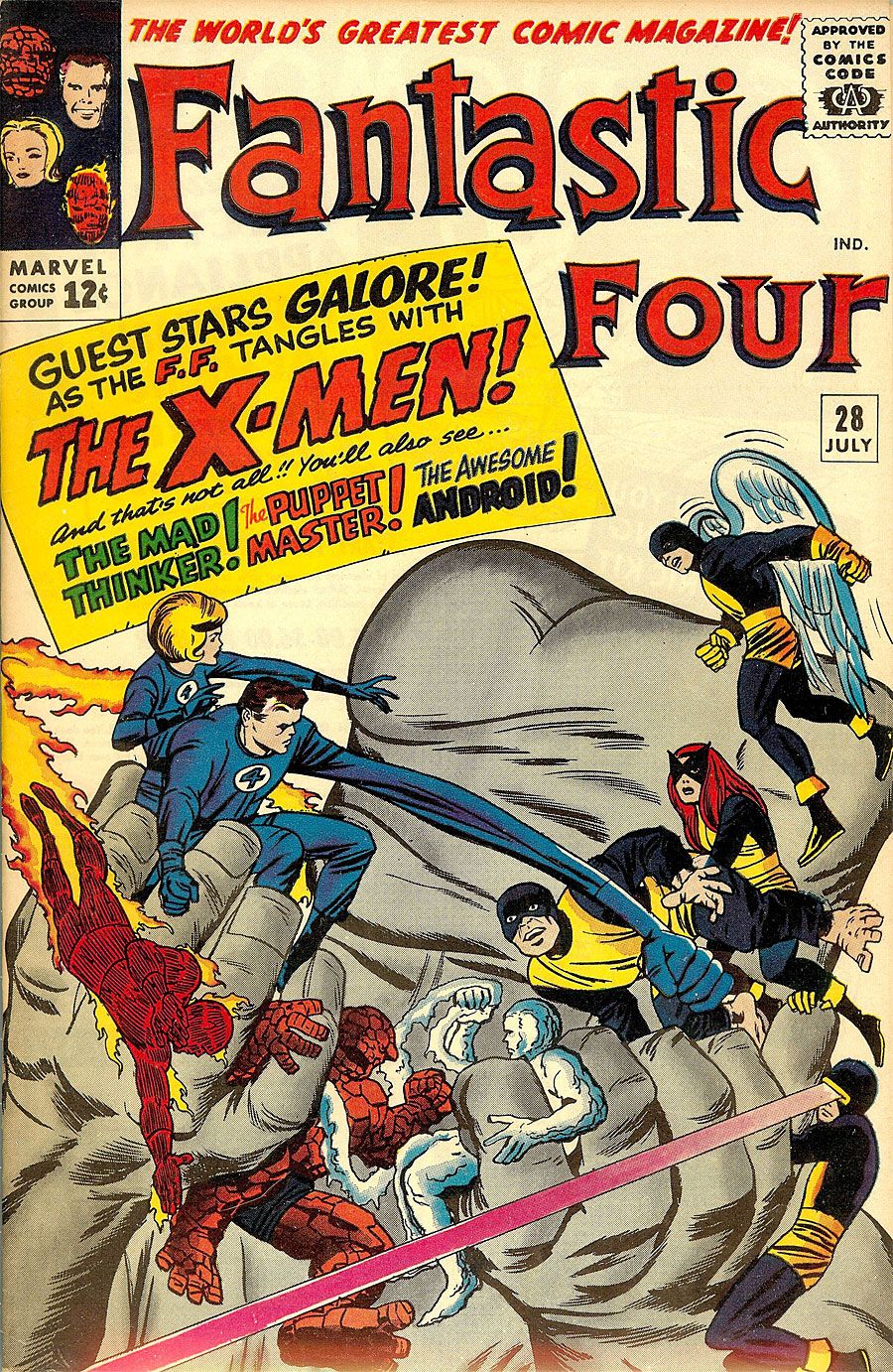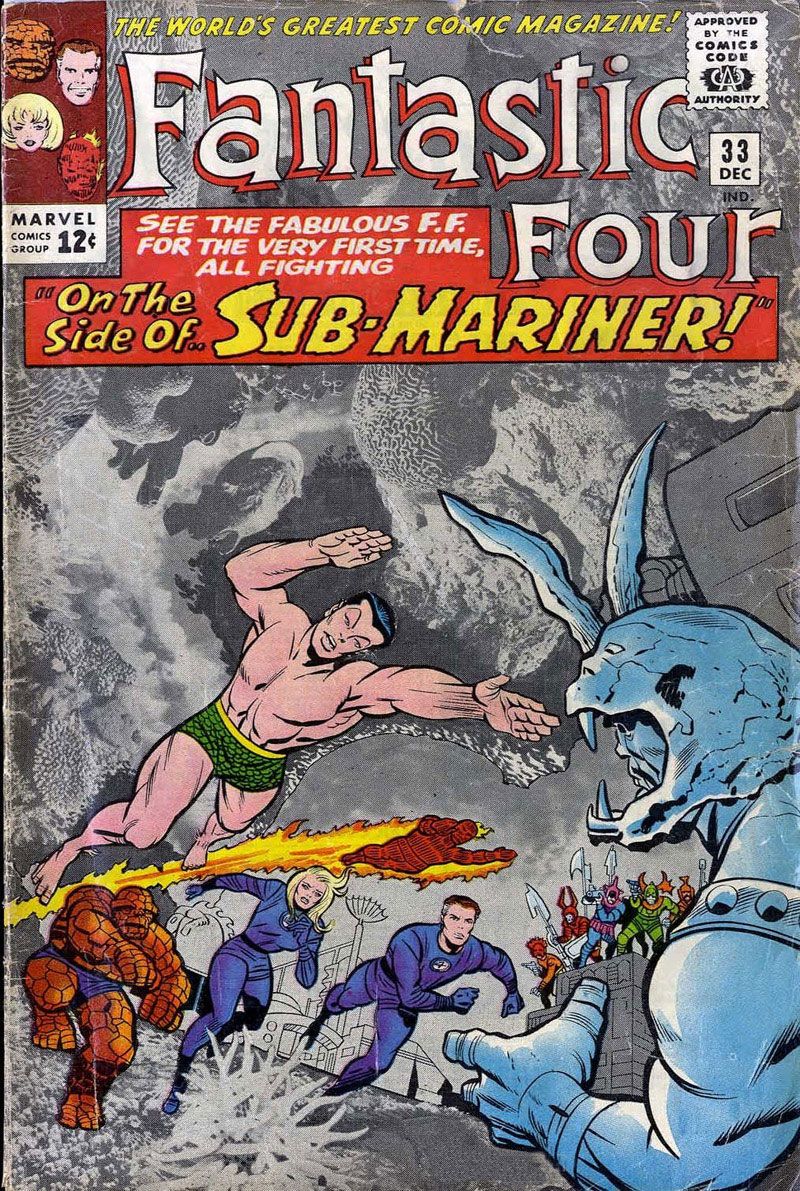Every universe starts with a big bang. In the case of the Marvel Universe, the big bang was the publication of "The Fantastic Four" #1. From there, Stan Lee and Jack Kirby spent the next 101 issues introducing the building blocks of the Marvel U, creating the bedrock of the stories told now, 55 years later.
For nearly a decade, Kirby brought his unmatchable sense of design and unparalleled sense of wonder to every panel, creating a visual language that would go on to inform nearly every aspect of modern Marvel. At the same time, Lee added a never before seen in comics dynamism of character and a boundless energy that gave Marvel its trademark humor, albeit a humor that was often blended with tragedy.
5 Ways Fox Can Course-Correct The "Fantastic Four" Franchise
Almost every issue of "Fantastic Four" seemed to birth an idea that would be expanded upon by future creators. Lee and Kirby not only introduced fans to the Marvel Universe's first heroes -- Mister Fantastic, Invisible Girl/Woman, Human Torch and The Thing -- they also laid the foundation for comics' first shared universe. It's chaotic on paper, but completely functional in practice.
In our two-part retrospective, CBR heads back to the Silver Age. We'll track the concepts Lee and Kirby introduced in the pages of "The World's Greatest Comic Magazine," issue by issue, world by world, and character by character.
"Fantastic Four" #1 (1961) - "The Fantastic Four!"
Not only did the first issue feature very different heroes who would serve as templates for generations to come, "Fantastic Four" #1 introduced a unique evildoer that would endure through the decades. In their inaugural issue, the newly powered foursome took on the Mole Man, a stunted, creepy, myopic madman who lived underground yet wanted to rule the surface world. Serving the Mole Man was a legion of subterranean creatures that would appear again and again throughout the decades, as Mole Man's Subterranea would be the setting of many a Marvel epic.
"Fantastic Four" #2 (1962) - "The Fantastic Four Meet the Skrulls from Outer Space!"
The title says it all. In their second issue, Lee and Kirby introduced a race of shape shifting aliens known as the Skrulls. This first group of Skrulls the FF encountered masqueraded as Marvel's fab foursome until Reed hypnotized the aliens into believing they were simple cows. It seemed like a one-and-done tale, but the Skrulls have returned again and again, bringing chaos and discord to the Marvel Universe. The Skrulls' greatest epic was "Kree/Skrull War" in the pages of the "Avengers," a tale considered by many fans to be one of Marvel's greatest sci-fi epics of all time. More recently, the Skrulls were the antagonists in Marvel's "Secret Invasion" event, the repercussions of which continue to fuel the Marvel Universe today.
"Fantastic Four" #4 (1962) - "The Coming of... Sub-Mariner!"
Johnny Storm was, quite obviously and intentionally, a modern day reinvention of the Golden Age Human Torch, and in the pages of "Fantastic Four" #5, Lee and Kirby went back to the Golden Age well and pulled out another legend. Unlike his fiery counterpart, the Sub-Mariner was pretty much the same character that starred in classic stories throughout the '40s and '50s. This was Namor in all his arrogant glory, but now the always foul-tempered Atlantean prince was a full-on antagonist. Here we see the introduction of the classic Marvel anti-hero, a role Namor still plays.
"Fantastic Four" #5 (1962) - "Prisoners of Doctor Doom!"
With their fifth issue, the Fantastic Four found their arch nemesis in Doctor Doom, the despot from Latveria who eventually became the greatest villain in the Marvel Universe. Victor Von Doom's nobility, arrogance and need to prove his superiority over Reed Richards made him the perfect foe for the FF. While his first story was a bit silly (he forced the FF to go back in time to steal Blackbeard's treasure chest), the idea of time travel would forever be linked to the character, providing the story engine for many classic Marvel adventures.
"Fantastic Four" #6 (1962) - "Captives of the Deadly Duo!"
By their sixth issue, the team had already built up quite a rouges gallery, and this issue marked the first time two of those villains teamed up. Doctor Doom and Sub-Mariner joined forces here for the first time, but would go on to co-star in "Super Villain Team Up" in the '70s, and later helped form the villainous Cabal in the 2000s. Spanning decades, their history is dramatic, intricate and intense, fueled by megalomania and grudging respect from both parties -- and it all started here.
"Fantastic Four" #10 (1963) - "The Return of Doctor Doom!"
Marvel made two very important additions to the Marvel Universe in the tenth issue of "Fantastic Four." It wasn't the return of Doctor Doom that made this issue so notable -- it was the comic book debuts of the creators of the Marvel Universe. That's right, Stan Lee and Jack Kirby made their first four-color appearance here, beginning a long-standing tradition of Marvel creators appearing in the pages of Marvel comics.
"Fantastic Four" #11 (1963) - "A Visit With the Fantastic Four"
Between the Sub-Mariner and Doctor Doom, the first threats the FF faced were rather dire -- until the Impossible Man showed up. The first appearance of the impish, shape-changing alien created a precedent for wackiness in the Marvel Universe. There were many laughs to be had with the Fantastic Four over the years alongside remarkable levels of pathos, and this issue established that great comedic tradition.
"Fantastic Four" #12 (1963) "The Incredible Hulk"
The Thing versus the Hulk. These two titanic titans have had many memorable clashes, but "FF" #12 was their very first. The energy and impact burst off the pages, as though Kirby upped his game after realizing he was setting the standard for all Hulk vs. Thing battles to come. It's sad to think the pair may never clash on film due to Marvel and Fox's film rights arrangement, but at least we'll always have the original.
"Fantastic Four" #15 (1963) "The Fantastic Four Battle the Mad Thinker and His Awesome Android"
Over a year into their run, Lee and Kirby were really heating up, introducing villain after villain who would survive deep into the modern era of Marvel. This issue saw the birth of Mad Thinker and his Awesome Android. With the Thinker, Lee and Kirby introduced one of the few FF foes that could match wits with Reed Richards, a fact that has kept him as a constant, top-tier threat to the FF and the rest of the Marvel U. The Awesome Android may be one of Kirby's wackiest designs, but it's still stomping around Marvel's New York City, most recently as an intern in a law office She-Hulk recently worked for, a perfect example that even the craziest Lee/Kirby concepts have longevity.
"Fantastic Four" #18 "A Skrull Walks Among Us!"
While Lee and Kirby were introducing many villains who would become the core evildoers of Marvel's Earth, the pair also built the worlds of Marvel's cosmic universe -- a universe that would inspire the works of Jim Starlin, Dan Abnett, Andy Lanning and so many other creators to follow. This issue introduced the Super Skrull, Marvel's first great cosmic villain -- but he definitely was not the last. The Super Skrull had all the powers on the Fantastic Four, and his introduction cemented the Skrulls as far more than another forgotten Silver Age alien race.
"Fantastic Four" #19 (1963) "Prisoners of the Pharoah!"
The saga of Kang and his multiple time-scattered identities has been one of Marvel's longest-running threads, and one that continues today. Though he mainly menaces Earth's heroes in the pages of the "Avengers," Rama-Tut, one of Kang's time traveling personas, first appeared in "FF" #19, and while it wasn't revealed in the issue that he and Kang were one and the same, it was the first step to that revelation as Lee and Kirby laid the groundwork for the time-traveling dictator's future schemes.
"Fantastic Four" #20 (1963) "The Mysterious Molecule Man!"
In "Fantastic Four" #20, Lee and Kirby introduced a very different type of villainous archetype to the Marvel U. Owen Reese was an unassuming man who couldn't catch a break until he was given the powers of a god. Though Molecule Man has tried to use his ability to control the very molecules that make up reality for good, time has proven again and again that absolute power corrupts absolutely. Like most of Lee and Kirby's creations, Reese still plays a key role in the Marvel Universe, most recently as one of the major players in the currently unfolding "Secret Wars" event.
"Fantastic Four" #21 (1963) "The Hate-Monger!"
"FF" #21 was notable as the first time the 1940s star of "Sgt. Fury and His Howling Commandos" (pre-eye patch, pre-S.H.I.E.L.D.) was inserted in one of Marvel's modern day superhero books as one of Reed and Ben's World War II compatriots. The issue also introduced a legacy villain into the Marvel Universe in the Hate Monger. There would be many who would don the Klu Klux Klan-like hood of the Hate Monger in the years to come, but Lee and Kirby's version was none other than Fury's arch-nemesis from WWII: Adolf Hitler.
"Fantastic Four" #28 (1964) "We Have to Fight the X-Men!"
Since we currently live in an era where the Fantastic Four and the X-Men could potentially share a cinematic universe at Fox, it's important to note the first meeting between two of Lee and Kirby's greatest team creations took place in he pages of "Fantastic Four" more than four decades ago. In their first encounter, both teams were manipulated into battling each other by the combined evil of the Mad Thinker and the mind controlling Puppet Master. This began a grand tradition of Fantastic Four and X-Men encounters, the next of which -- if rumors are to be believed and the current "Fantastic Four" film franchise's misfires fortunes haven't derailed it -- could occur on the big screen.
"Fantastic Four" #33 (1964) Side-By-Side with Sub-Mariner!"
Lee and Kirby were world building terra firma and outer space, but in this issue, the creative legends turned their attention to the undersea world of Atlantis. By the "Fantastic Four" #33, the Sub-Mariner and the FF had battled many times, but this was the first time Namor had to turn to his enemies for help, echoing his heroic WWII roots. This issue also marked the first appearance of Attuma, a foe that would go on to become the Sub-Mariner's greatest adversary.
Check back with CBR later this week for part two of our "Fantastic Four" milestones, including the slow burn introduction of the Inhumans, the arrival of the Silver Surfer, the debut of Galactus and much more!

